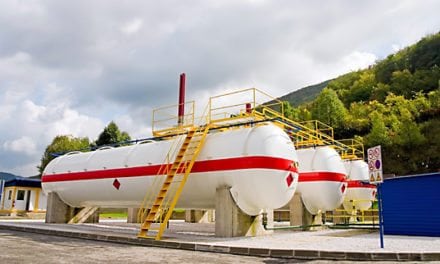Market Report & Analysis for 1/11/18 Afternoon Edition

Afternoon Market Overview
The EIA released their January Short Term Energy Outlook Report (STEO). They revised global demand higher compared to last month’s report. Following are the main oil highlights: U.S. crude oil production averaged an estimated 9.3 million barrels per day (b/d) in 2017 and is estimated to have averaged 9.9 million b/d in December. U.S. crude oil production is forecast to average 10.3 million b/d in 2018, which would mark the highest annual average production in U.S. history, surpassing the previous record of 9.6 million b/d set in 1970.
EIA forecasts production to increase to an average of 10.8 million b/d in 2019 and to surpass 11 million b/d in November 2019. EIA estimates that global petroleum and other liquid fuels inventory draws averaged 0.4 million barrels per day (b/d) in 2017, marking the first year of global inventory draws since 2013. EIA expects global inventories to increase by 0.2 million b/d in 2018 and by 0.3 million b/d in 2019. Global consumption of petroleum and other liquid fuels grew by 1.4 million b/d in 2017, reaching an average of 98.4 million b/d for the year. Although the rate of consumption growth slowed in 2017 compared with 2016, EIA expects that consumption growth will average 1.7 million b/d in 2018 and almost 1.7 million b/d 2019, driven by the countries outside of the Organization for Economic Cooperation and Development (OECD).
Non-OECD consumption growth would account for 1.2 million b/d and 1.3 million b/d of the global growth in 2018 and 2019, respectively. The non-OECD petroleum and other liquid fuels consumption growth is driven by a forecast of higher growth in non-OECD oil- weighted Gross Domestic Product (GDP). Growth in non-OECD oil-weighted GDP is expected to be 4.3% in 2018 and 4.4% in 2019, up from 3.9% in 2017. EIA estimates that petroleum and other liquid fuels production increased by 0.7 million b/d in 2017 in countries outside of the Organization of the Petroleum Exporting Countries (OPEC). Combined production growth of 1.0 million b/d in the United States and Canada more than offset a decrease of 0.3 million b/d among the rest of the non-OPEC producers. EIA expects non-OPEC petroleum and other liquid fuels production to rise by 2.0 million b/d in 2018 and by 1.3 million b/d in 2019. The forecast production growth is centered in the Americas, as U.S. production growth is forecast to average 1.5 million b/d in in 2018 and 1.0 million b/d in 2019. Canada and Brazil are expected to contribute combined growth of 0.4 million b/d in both 2018 and 2019. OPEC crude oil production averaged 32.5 million b/d in 2017, a decrease of 0.2 million b/d from 2016.
The decline was mainly a result of the November 2016 OPEC production agreement that aimed to limit OPEC crude oil output to 32.5 million b/d. Saudi Arabia and a number of Persian Gulf producers reduced crude oil production in support of the agreement. Other countries saw supplies decline because of political factors, as was the case in Venezuela. OPEC and non-OPEC participants agreed on November 30, 2017, to extend the production cuts through the end of 2018 in an effort to reduce global oil inventories. OPEC crude oil production is forecast to increase by 0.2 million b/d in 2018, partially reflecting EIA’s expectation of Libya maintaining relatively high production levels achieved near the end of 2017. EIA expects that OPEC crude oil output will rise by an additional 0.3 million b/d in 2019 as crude oil production slowly returns to pre-agreement levels. In the fourth quarter of 2017, the average compliance rate among OPEC members was near 100%. EIA estimates that OECD commercial crude oil and other liquid fuels inventories were 2.91 billion barrels at the end of 2017, equivalent to roughly 62 days of consumption. OECD inventories are forecast to rise to 2.96 billion barrels at the end of 2018 and then to 3.05 billion barrels at the end of 2019.





